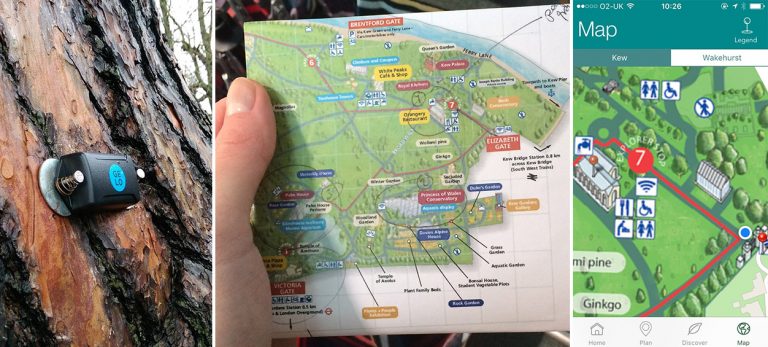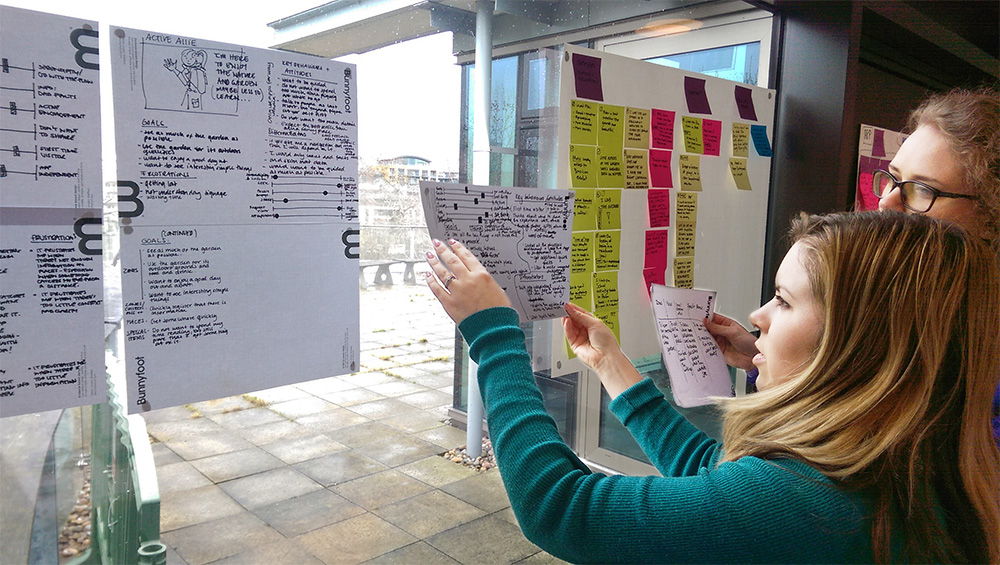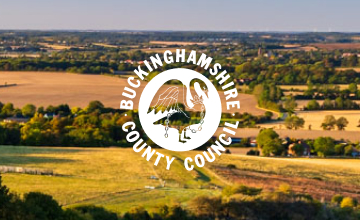
About our client
Opened in 1749, Kew Gardens houses one of the world’s largest collections of living plants and the herbarium has seen over 7 million preserved plant species. This UNESCO world heritage site is a major UK tourist attraction, receiving over 1.5 Million visitors a year.
What Kew Gardens wanted
Bunnyfoot were asked to research customer experiences at Kew Gardens and to test the usability of their Internet of things (IoT) service, which is made up of a combination of ibeacons, a supporting WiFi network, and mobile apps for iOS and Android phones.
- Research the experiences of first-time visitors and returning visitors (non-members)
- Provide evidence-based recommendations on how to enhance customer experiences at Kew Gardens and improve the usability of their IoT service

The work
- Researchers spent two days at Kew Gardens performing ‘contextual research’ (actively embodying the role of the target audience) to gain a first-hand experience of the IoT service
- The research focused on two key attractions (the Palm House and Princess of Wales Conservatory) as well as the surrounding grounds
- We employed a ‘mobile ethnographic’ approach (using a dedicated mobile app and micro camera) captured the highs and lows of the experiences as they happened
- Research findings were sorted into clusters of related themes and behavioural characteristics; these formed the basis of skeleton personas and provided insights into the IoT service

Bunnyfoot consultants working on Kew Gardens’ skeleton personas

What Bunnyfoot delivered
- Photographic evidence of each customer journey, from walking into Kew Gardens and downloading the app, through to exploring key attractions and the surrounding grounds
- Diary of touch points, documenting the experiences as they happened
- Experience maps, documenting the highs and lows of the IoT service
- Skeleton personas (consolidating customer goals, behaviours, attitudes, and pain points) gave inspiration for service refinements based on customer needs
- Framework for considering service offerings based on customer needs at different scales, from the macro level of ‘zones’ within the garden, down to the micro level of ‘specific artefacts’
- Usability issues were identified regarding the beacon technology and supporting mobile apps
- Final debriefing to give evidence-based recommendations on how to refine the usability of the IoT service and enhance customer experiences – e.g. ensure that customers have access to context-specific content after leaving the proximity of a beacon

The learnings
Beacons are an imperfect technology – their broadcast signal can be easily disrupted by environmental conditions; even the orientation of the beacon can affect signal range and direction – but they do have their uses when deployed mindfully.
In the case of Kew Gardens, beacons should be used to augment higher level experiences (‘zones’ and ‘places’) rather than lower levels (‘collections’ and ‘specific artefacts’). For example, visitors who prefer more serendipitous experiences will welcome the ability to access detailed content at places that catch their eye; if they see a building in the distance it will raise questions of what it is and what it has to offer. Using beacons to provide these answers is an ideal use case.
Insights such as these can only be readily gained through contexual research and the analysis of customer behaviours. If you are considering the use of beacons, or if you want to provide an IoT service, you should consider this approach.







